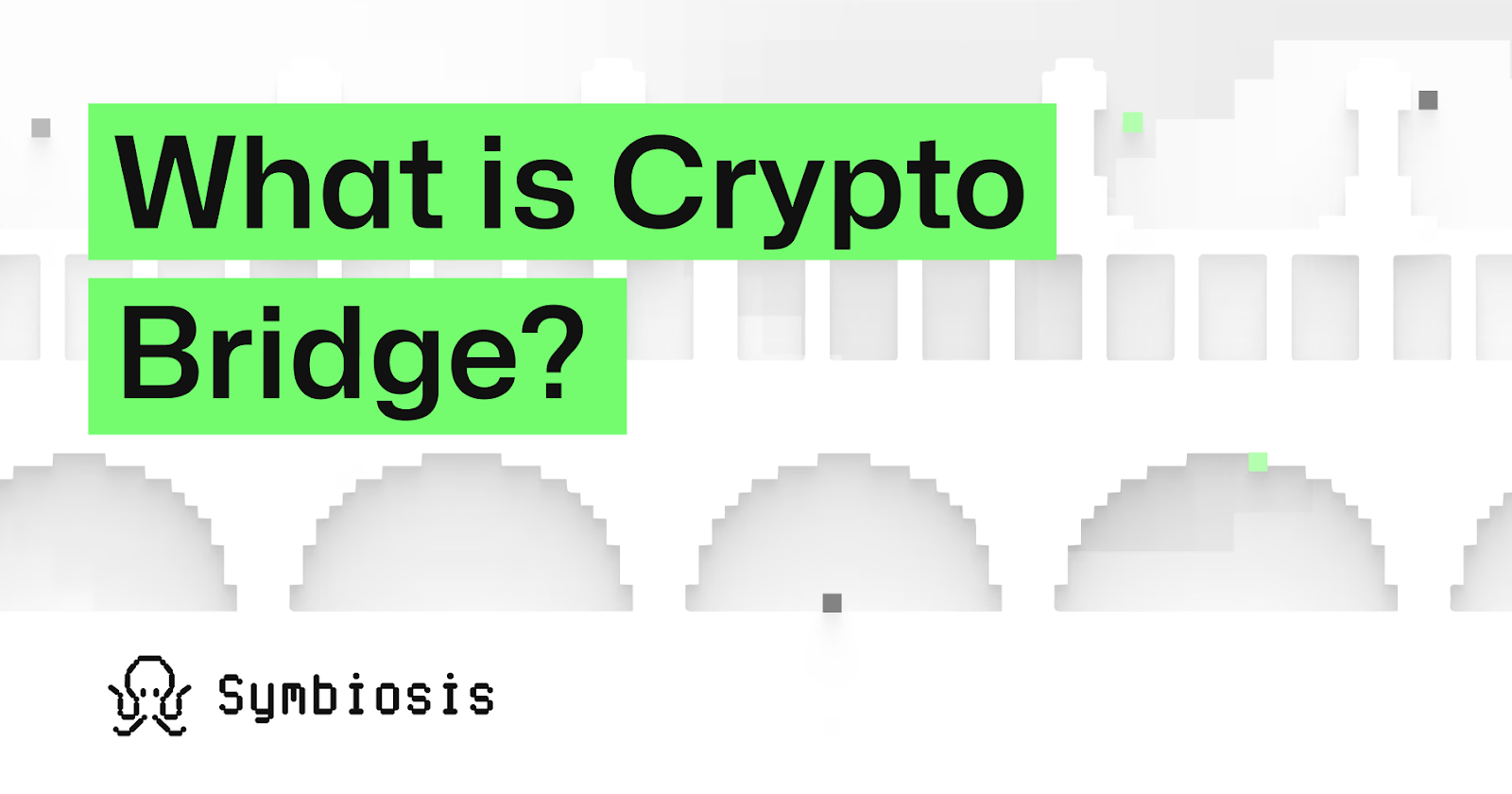
Cross-chain liquidity moving tokens reliably between different blockchains has become a routine part of a trader’s, farmer’s, or builder’s workflow. Symbiosis provides a single-click interface and an engine under the hood that calculates routes and executes transfers so users can move assets between chains from their own wallets.
This article explains what a crypto (cross-chain) bridge is, how Symbiosis implements bridging, the technical plumbing behind routing and execution, and the practical benefits for end users (traders, liquidity farmers, NFT buyers, and L2 migrators). You’ll also find a concise Q&A with the common operational and security questions people ask before they bridge funds.
A Crypto bridge is a protocol that enables value and data to move between otherwise isolated blockchains. In practice that means a token on chain A can be represented, swapped, or delivered on chain B so the user can use it with apps, markets, or contracts on B. Bridges accomplish this with various designs lock-and-mint wrappers, liquidity pools plus relayers, or messaging plus signing systems but the user goal is the same: make an asset available on a target chain without selling it.
Key properties that distinguish bridges:
Symbiosis is a cross-chain liquidity aggregation protocol and engine that exposes bridging and cross-chain swap functionality through a single interface and via API/SDK. Its product mixes on-chain smart contracts, off-chain relayer nodes, and an automatic routing layer that finds efficient paths between source and destination chains. The user-facing portal (and the SDK) performs route selection and then executes the required transactions while you sign from your wallet.
What to remember:
The user connects a self-custody wallet and specifies source chain, source token, destination chain, and destination token or address. Symbiosis’s UI/SDK gathers on-chain balances and available routes.
The Symbiosis engine evaluates options: direct liquidity routes, transit tokens, and external integrations. It scores each route by estimated gas, slippage, number of hops, and expected delivery time, then shows the optimal route(s) to the user.
Once the destination operation completes, the UI provides the transaction hash(es) for both sides so users can verify actions on block explorers.
Symbiosis supports more than 45 blockchains. This includes major L1 and L2 networks such as Ethereum, BNB Chain, Polygon, Arbitrum, and Optimism. It also extends to newer chains like Scroll, Linea, Mantle, and Blast, as well as specialized ecosystems such as Hyperliquid. This coverage ensures that users can bridge assets to where opportunities exist, whether it’s yield farming on Polygon, NFT drops on Scroll, or trading on Hyperliquid.
For practical clarity, here’s the typical user flow when you bridge with Symbiosis:
Note: there is no registration or custodial account setup for these flows everything happens between your wallet and Symbiosis’s smart contracts and relayers.
Symbiosis has undergone third-party audits of its contracts. It relies on a relayer/validator model where events are monitored and confirmed across chains. While audits and validator models reduce risk, it’s important to note that all cross-chain bridges carry inherent risk. Best practices include testing small transfers first, verifying contract addresses, and keeping track of audit updates.
Q: What is a crypto bridge?
A: It’s a protocol that connects two blockchains so tokens can move between them, typically by locking tokens on one chain and issuing them on another or routing through liquidity pools.
Q: How does Symbiosis work as a cross-chain bridge?
A: It combines on-chain contracts, a relayer network, and a routing engine. You sign transactions from your wallet, and the protocol handles execution across chains.
Q: Which networks are supported?
A: Symbiosis supports 45+ blockchains, including Ethereum, BNB Chain, Polygon, Arbitrum, Optimism, Scroll, Linea, Mantle, Blast, and Hyperliquid.
Q: Is the bridge secure?
A: Symbiosis has published audits and uses a relayer/validator model. Like all bridges, there is inherent risk, so it’s best to check audits, test with small amounts, and verify on block explorers.
Q: Do I need to create an account?
A: No. You bridge directly from your wallet. No registration or KYC is required for typical bridging.
Symbiosis provides an API and SDK for developers to fetch chain lists, token metadata, and route quotes. This makes it easy to integrate bridging directly into wallets, aggregators, or marketplaces. Developers can also surface transaction hashes so users can independently verify actions on block explorers.
If your workflow requires frequent movement of tokens across chains for trading, farming, NFT purchases, or migration to new L2s Symbiosis makes it easier. It keeps you in control of your wallet, automates route discovery, and supports a wide range of networks. While cross-chain activity always carries some risk, Symbiosis’s non-custodial design and broad integrations provide a practical, secure, and efficient option for users.